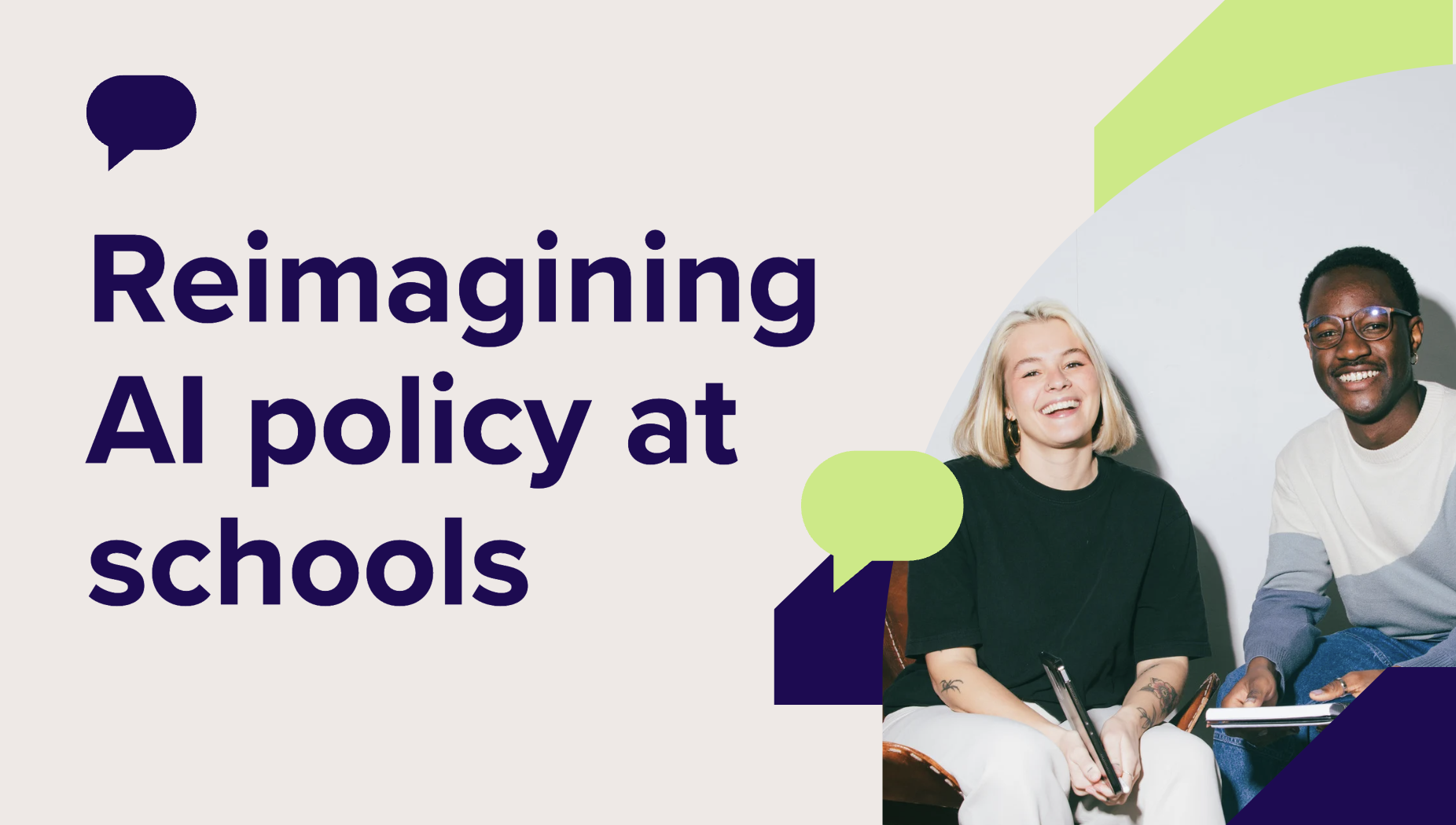A New Way to Think About AI School Policy
At Alayna, we are constantly exploring new technologies and their potential to transform education. Recently, we made a significant discovery related to AI School Policies for Educators that we believe will be immensely helpful for schools. While exploring the Ask Alayna chatbot, we started by investigating AI tools for teachers, recognizing the growing need for tools that can provide extra support. This exploration expanded into researching AI applications in education, leading us to topics like "AI lesson planning," "AI grading," and "AI-driven learning."
Why AI Policy Matters
AI is rapidly reshaping the world, and education is no exception. An AI policy is a set of guidelines that helps schools use AI responsibly and effectively. It serves as a roadmap to ensure AI enhances teaching and learning while addressing potential challenges. A well-crafted AI policy ensures everyone understands how to use AI in a manner that is ethical, equitable, and beneficial. When applied thoughtfully, AI can revolutionize education, improving outcomes for both students and educators.
The Problem with Current Approaches
Many schools either overlook AI altogether or adopt it without a clear plan, leading to significant challenges:
AI Bias in Education
Teachers may use AI tools without understanding how biases in AI systems can affect outcomes. For instance, AI systems trained on biased data might unintentionally disadvantage certain student groups, resulting in unequal opportunities.
Privacy Concerns
AI systems often rely on student data, raising concerns about data privacy and security. Without clear guidelines, sensitive information might be mismanaged, leading to potential harm for students.
Academic Integrity
Students might misuse AI tools to complete assignments, undermining the development of critical skills. While AI can assist in learning, it’s crucial to ensure students engage with the material and gain meaningful understanding.
Role of Teachers
It’s essential to emphasize that AI is a tool to support teachers, not replace them. Teachers provide invaluable guidance, mentorship, and emotional support—elements that AI cannot replicate.
A New Solution: AI-Powered Policy Creation with Ask Alayna
During our exploration with Ask Alayna, we realized the potential of using AI to help create comprehensive AI policies for schools. By leveraging the Ask Alayna chatbot, educators can efficiently design policies that address key challenges and maximize AI's benefits.
Here is an example of a prompt designed to guide the creation of an AI policy framework:
Imagine you are a specialist in creating school rules, especially about using Artificial Intelligence (AI) in schools for students from Kindergarten to Grade 12. Your job is to make a set of guidelines for using AI in any school. These guidelines should be easy for teachers to understand, even if they don’t know much about AI, and should help teachers consider new ways of using AI responsibly.
Start with:
Explain what these AI guidelines are for and why they are important for schools.
Highlight the benefits of AI for teaching and learning.
Discuss potential challenges and precautions when using AI.
Next, address the following critical areas:
Keeping Student Information Safe
Describe how schools can protect student privacy and data security.
Explain compliance with regulations regarding data privacy.
Outline steps schools should take if student data is compromised.
Ensuring Fairness in AI
Highlight how AI bias can affect fairness.
Suggest strategies to mitigate bias in grading and learning activities.
Using AI Ethically in Schoolwork
Define appropriate use of AI tools for student assignments.
Propose ways to teach students ethical AI usage.
Emphasize AI literacy, helping students understand and use AI correctly.
Finally:
Write the guidelines in simple, organized language.
Use examples to clarify key points.
These guidelines should help any school implement AI in a way that is fair, beneficial, and thoughtful.
Understanding the Prompt
This prompt equips the chatbot to act as an expert in education policy. It outlines a detailed framework that schools can adapt, covering critical areas such as:
Data Privacy: Protecting student information and ensuring compliance with privacy regulations.
Bias Mitigation: Identifying and reducing unfair biases in AI systems.
Academic Integrity: Teaching students ethical AI use and preserving the learning process.
Teacher Training: Ensuring educators are equipped to use AI effectively.
Ethics and Accessibility: Promoting inclusive and ethical use of AI tools.
Community Engagement: Involving stakeholders in the policy development process.
Conclusion
What does this mean for educators? It signifies the dawn of an exciting new chapter in education. By approaching AI with thoughtful planning and clear policies, we can unlock its transformative potential. A strong AI policy safeguards students, empowers teachers, and prepares schools for a future where AI plays an increasingly significant role.
The prompt we’ve shared is a powerful tool, enabling educators to craft customized AI policies that reflect their unique needs and contexts. It’s not just about creating rules—it’s about ensuring AI is used in ways that are equitable, ethical, and effective.
Together, we can leverage AI to enhance learning, streamline teaching, and build a brighter future for education. Let’s take the first step in making our schools better, more inclusive, and more innovative—for both teachers and students alike.

